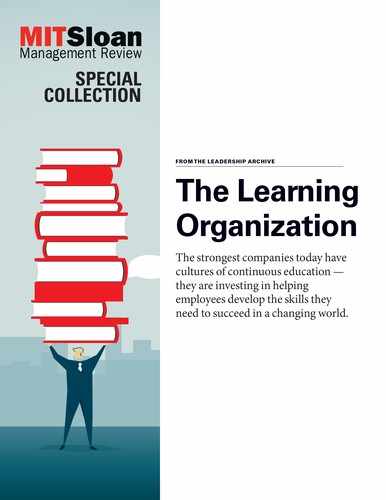Preparing for the Coming Skill Shifts
In the age of AI, companies should focus on retraining the people they already have.
About 80% of U.S. and European CEOs surveyed by McKinsey say they worry about ensuring that their companies have the right skills mix to thrive in the age of AI and automation. Those leaders come from a variety of industries, and they’re smart to be thinking about talent at a strategic level.
Given the complexities of implementing the new technologies, companies will, of course, need people who can design the right algorithms and interpret the data. But they’ll also need so-called “softer” skills to do the work that machines aren’t capable of doing. Our research suggests that demand for social and emotional skills will grow by about one-quarter by 2030, and we also see a clear shift toward higher cognitive skills, including creativity and complex information processing.
An HR tool kit for shaping a workforce already exists: Companies can retrain people, redeploy them to make the best use of skills available, contract work out, hire new people, and release those who do not meet the organization’s needs. But the external labor market can do only so much to address the anticipated shifts in demand, the pace of which will accelerate over the next decade, according to our research. If the volume of companies seeking to hire for the necessary technical and soft skills rises too rapidly, full-time salaries and contractor rates will skyrocket, and most organizations will be unable to compete with global platforms and tech giants for the talent they seek.
Redeployment may help companies play to workers’ strengths, but skills gaps will inevitably remain. So in the AI era, companies should double down on retraining the people they have, with an emphasis on lifelong learning and adaptability.
Though reskilling (teaching employees new or qualitatively different skills) and upskilling (raising existing skill levels) have become hot topics, there seems to be more talk than large-scale action in these areas. A key choice is whether to use in-house training resources and programs tailored to the company or to partner with an educational institution to provide external learning opportunities for employees. AT&T has chosen the latter course: The company has developed a broad set of partnerships with 32 universities and multiple online education platforms to enable employees to earn the credentials needed for new digital roles.
Other companies, including the German software giant SAP and Walmart, have opted for in-house training programs. Walmart has set up more than 100 “academies” in the United States that provide classroom and hands-on training for front-line supervisors and managers. SAP has constructed a series of “learning journeys” for thousands of employees at its Digital Business Services division that feature boot camps, shadowing senior colleagues, peer coaching, and digital learning.
Both approaches make workforce learning a priority. Partnering with external educational providers may be easier for most companies, for the same reason that most organizations can’t afford to compete with deep-pocketed tech giants to hire experienced tech talent. A starting point in either case is to take stock of the skills that are already present in the workforce and then map those skills to the skills companies are projected to need in the future.
Taking inventory is also a first step on the way toward making HR more strategic, as many companies will need to do in the next few years. With strategy likely to be highly dependent on the availability of talent in an AI-fueled future, HR will need to play a larger role in long-term planning, with the chief human resources officer evolving into as central a figure as the CFO.
HR departments will also have to undergo profound changes in the way they work. That means developing an internal market for talent as well as a marketplace for lifelong training experiments — and supporting employees’ learning by analyzing skill building by career path, for instance, and focusing on closer human-machine “interwork.” The long-term goal is to embed a new flexibility and adaptability in the workforce, accompanied by a new adaptability within the HR function.
Ensuring that the right skills are in place at the right time is shaping up as one of the biggest corporate challenges of our time. Given the winner-takes-most dynamic that we are already seeing, first with digital transformation more broadly defined and now in more pronounced fashion with AI and automation, no company can afford to underestimate the coming skill shifts and how those may affect their prospects.
Jacques Bughin is a senior partner in the Brussels office of the management consulting firm McKinsey & Co. (@McKinsey) and a director of the McKinsey Global Institute (@McKinsey_MGI).
Copyright © Massachusetts Institute of Technology, 2018. All rights reserved.
